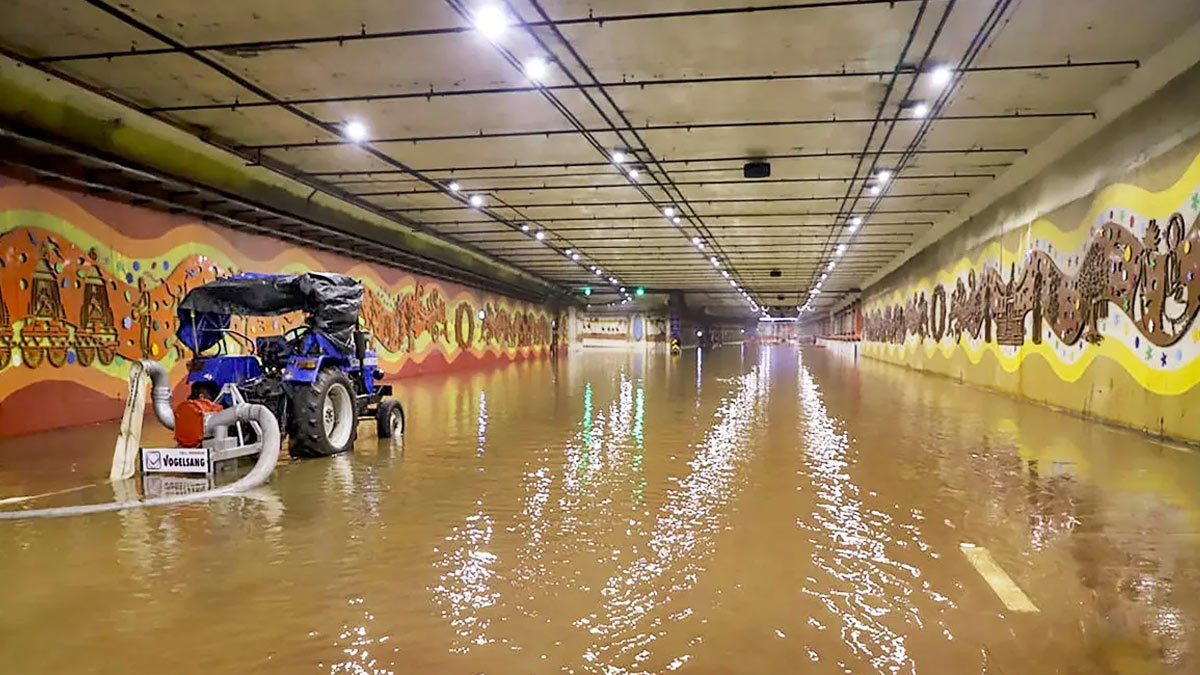
Delhi is grappling with a severe weather crisis following intense rainfall that inundated large parts of the city. The unprecedented downpour on Wednesday evening resulted in significant waterlogging, causing extensive disruption. The National Weather Office has categorized Delhi as a ‘high-risk area’ due to the potential for further flooding. As the city grapples with the aftermath, it’s crucial to understand the profound health impacts of such waterlogging and flooding events.
Table of Content:-
The Immediate Aftermath of Heavy Rainfall
On the evening of the storm, Delhi experienced heavy rains, with the India Meteorological Department (IMD) recording substantial rainfall across various parts of the city. Safdarjung station registered 79.2 mm of rain, while other areas reported even higher amounts, including Mayur Vihar with 119 mm and Delhi University with 77.5 mm. This overwhelming volume of rain led to severe waterlogging, transforming roads into virtual rivers and causing massive traffic congestion. Commuters faced delays of over 1.5 hours on major routes, including the Delhi-Noida Expressway and Mehrauli-Chhattarpur road.
Tragically, the rain’s impact was fatal in Ghazipur, where a 22-year-old woman and her toddler drowned after falling into an under-construction drain. The city’s emergency services have been stretched thin, with authorities advising residents to stay indoors, secure their homes, and avoid unnecessary travel. The Delhi Education Minister has announced the closure of all schools on August 1 as a precautionary measure.

The Problem Unveiled: Understanding Waterlogging and Its Immediate Impact
Waterlogging occurs when excessive rainfall overwhelms the city’s drainage system, leading to flooded streets and submerged areas. This issue is not unique to Delhi; cities across India, including Mumbai and Chennai, face similar challenges each monsoon season. Inadequate drainage infrastructure is often to blame, rendering urban areas vulnerable to the heavy rains that come with the monsoon.
The immediate effects of waterlogging include disrupted daily activities and significant traffic issues. Vehicles become stranded, and pedestrians navigate through knee-deep water, causing widespread inconvenience and potential damage to property. More critically, the stagnant water poses a substantial risk to public health, particularly as it can lead to the proliferation of waterborne and vector-borne diseases.
Also Read: Paris 2024 Olympics: Multiple Athletes Test Positive For COVID-19
The Health Impact of Waterlogging and Flooding
The health impacts of waterlogging and flooding are multi-faceted and severe. These conditions create an environment conducive to various health risks, from waterborne diseases to vector-borne illnesses and respiratory issues.
Waterborne Diseases
Cholera
This bacterial infection, caused by Vibrio cholerae, is transmitted through contaminated water. Symptoms include severe diarrhoea and dehydration. Without prompt treatment, cholera can be life-threatening.
Typhoid Fever
Caused by Salmonella typhi, typhoid fever is spread through contaminated water and food. It presents with prolonged fever, weakness, and abdominal pain. Untreated, it can be fatal.
Also Read: Cancer Care During Monsoon: Here Are The Essential Tips And Precautions
Dysentery
Both amoebic and bacillary dysentery become more prevalent in flood conditions. These infections cause severe diarrhoea with blood, accompanied by abdominal pain and fever. They spread through contaminated food and water.
Hepatitis A and E
These viral infections affect the liver and are spread through contaminated water. Symptoms include fever, jaundice, and abdominal pain.
Vector-Borne Diseases
Malaria
Floodwaters create ideal breeding grounds for mosquitoes, particularly Anopheles species that transmit malaria. Symptoms include high fever, chills, and flu-like illness, which can become severe if not treated.
Dengue Fever
Spread by Aedes aegypti mosquitoes, dengue fever causes high fever, severe headaches, and joint and muscle pain. Severe cases can lead to dengue hemorrhagic fever, which can be fatal.
Leptospirosis
This disease, caused by Leptospira bacteria, is contracted through contact with water contaminated by animal urine. Symptoms range from mild flu-like symptoms to severe conditions like kidney damage and meningitis.
Bottomline: The Need for Resilience and Preparedness
The recent heavy rains and resulting waterlogging in Delhi underscore the critical need for improved urban infrastructure and disaster preparedness. As the city continues to deal with the effects of the flooding, addressing these health risks becomes paramount. Preventive measures, timely medical interventions, and effective urban planning are essential to mitigate the impacts of future flooding events and protect public health.
Also watch this video
How we keep this article up to date:
We work with experts and keep a close eye on the latest in health and wellness. Whenever there is a new research or helpful information, we update our articles with accurate and useful advice.
Current Version